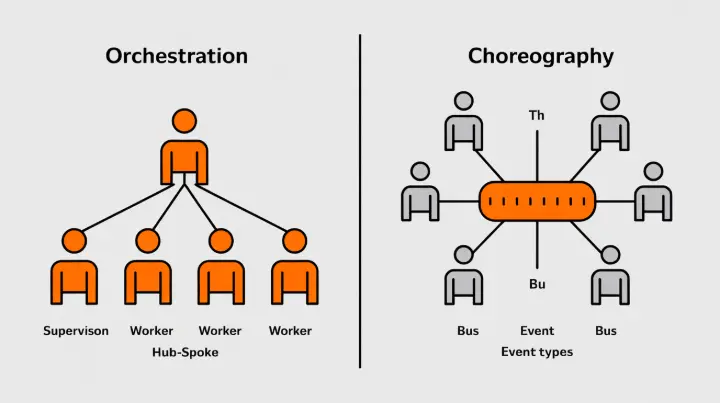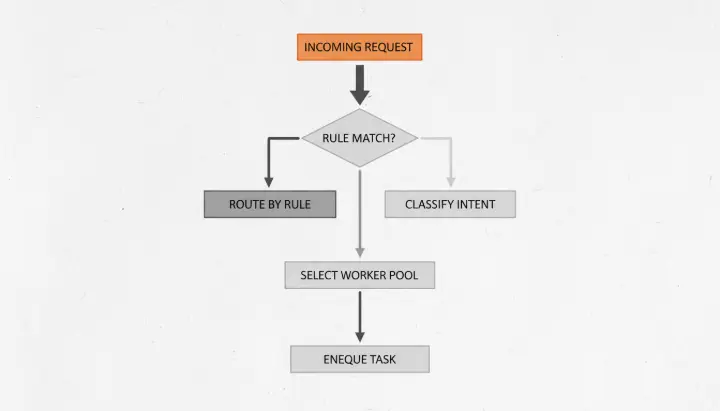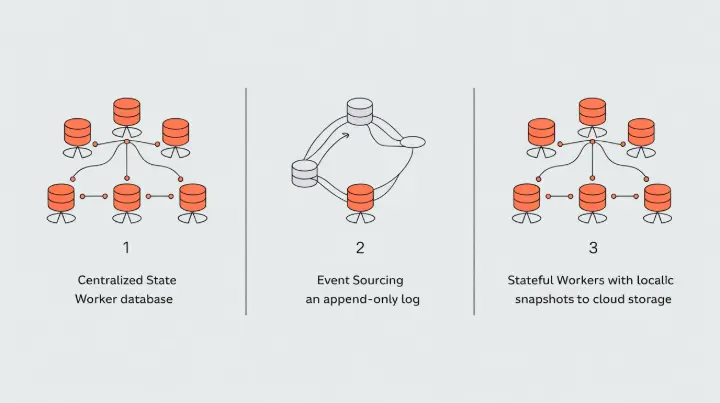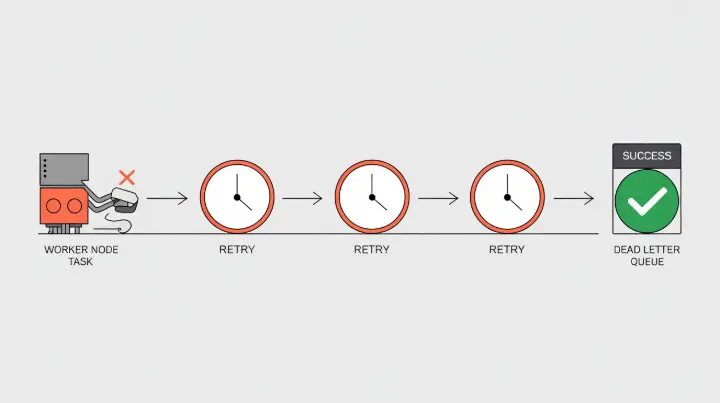Modern agentic systems are splitting responsibilities across specialized agents. Some supervise the flow, while others execute narrow tasks like qualification, classification, scheduling, or data enrichment. When built correctly, this architecture enables reliability, auditability, and parallel processing.
However, it also introduces challenging engineering problems: routing work to the right expert, surviving worker failures, and maintaining correct shared state. This post explores battle-tested design patterns, trade-offs, and practical implementations for production-grade supervisor to worker agent systems.
Why Choose Multi-Agent Architecture?
Breaking down complex systems into specialized agents isn't just a design preference, it's a necessity for production systems that need to scale reliably. Understanding when and why to adopt this pattern helps you avoid both over-engineering simple problems and under-engineering complex ones.
Business requirements drive the need for specialized agents. Instead of building one massive agent that handles everything, breaking down tasks into focused components provides clear benefits.
Expert agents can focus on specific domains, reducing hallucination risks. Parallel work distribution lowers overall latency. Failure containment prevents one broken component from crashing your entire system.
Governance becomes easier when each agent has a defined scope.
Consider a lead qualification pipeline. An intake agent receives raw inquiries, passes them to a qualification agent that scores the lead, then routes it to a pricing agent for quote generation, and finally hands it to a scheduler agent for follow-up.
Each agent excels at its specific task, and failures stay isolated.

Core Architecture Patterns
Choosing the right foundational architecture determines how your agents communicate, scale, and recover from failures.
Each pattern comes with distinct trade-offs between simplicity, performance, and operational complexity. Let's explore the three main approaches that production teams use.
Supervisor to Worker Orchestration
The supervisor pattern uses a single coordinator to route tasks and collect results. This central controller enforces global business rules and maintains a clear audit trail.
The supervisor knows which workers exist, tracks their availability, and manages the entire workflow. The main drawback is that this coordinator can become a bottleneck as your system scales.
Event-Driven Choreography
In pub/sub architectures, the supervisor emits events and workers subscribe to relevant event types. This decouples components and enables better horizontal scaling.
Workers can process events independently without waiting for central coordination. The trade-off is eventual consistency and increased complexity in understanding execution order.
Hybrid Approach
Most production systems combine both patterns. Use orchestration for high-value flows requiring strict ordering and consistency. Use pub/sub for asynchronous enrichment, telemetry, and non-critical paths. This gives you control where it matters while maintaining flexibility for background tasks.
Routing Strategies That Scale
Getting work to the right agent efficiently is one of the most critical decisions in multi-agent design. Your routing strategy impacts latency, accuracy, and system maintainability. The best approach often combines multiple techniques based on your specific workload characteristics.
Rule-Based Routing
Deterministic rules examine message types, metadata, and tags to select the appropriate worker. This approach is simple, explainable, and easy to debug. When a qualification request arrives, route it to the qualification worker pool. When pricing requests come in, send them to pricing workers.

Classifier-Based Intent Routing
For ambiguous inputs, use a small machine learning classifier to map context to the right agent. This works well when message types overlap or when natural language queries need intelligent routing. The classifier learns from examples and adapts over time.
Load-Aware and Affinity Routing
Advanced routing considers worker state. Route requests to workers that have cached context or warmed models. This reduces cold-start latency and improves response times. Track which workers recently handled similar requests and prefer them for related work.
Failover and Resilience Patterns
Production systems fail. Networks hiccup, services crash, and dependencies become unavailable. The difference between a robust system and a fragile one lies in how gracefully it handles these inevitable failures.
Implementing the right resilience patterns ensures your multi-agent system stays operational even when individual components fail.
Stateless Workers with Idempotent Tasks
Design workers to be stateless whenever possible. Each task should produce the same result regardless of how many times it runs. This makes retries safe and simple. Store all state externally and pass task identifiers for deduplication.
Checkpointing for Long-Running Tasks
When tasks take minutes or hours, implement periodic checkpoints. Save progress to your state store at logical boundaries. If a worker crashes, another can resume from the last checkpoint instead of starting over.
Circuit Breakers and Graceful Degradation
Monitor downstream dependencies and detect failures quickly. When a worker or external service becomes unreliable, open the circuit breaker and route to fallback flows. Perhaps return cached results or simplified responses instead of failing completely.
Backpressure and Queue Management
Protect workers from overload using bounded queues. When queues approach capacity, reject new work or redirect to alternative workers. This prevents cascade failures and maintains system stability under high load.
State Management Trade-Offs
Every multi-agent system needs to store and share state, but where and how you manage that state dramatically affects performance, consistency, and operational complexity. There's no universal best answer, only trade-offs that align better or worse with your specific requirements.
Centralized State Store
Using Redis, PostgreSQL, or specialized vector stores as your single source of truth provides strong consistency. All agents read and write to the same store, making auditing straightforward. The downside is potential latency bottlenecks as traffic increases.
Event Sourcing with CQRS
Maintain an append-only event log as your source of truth. Workers rebuild their state projections from events. This pattern excels at audit trails and enables replay for debugging. You can reconstruct any past state by replaying events.
Stateful Workers with Snapshots
Let workers maintain local state for fast access, but periodically snapshot to durable storage. This reduces latency while preserving durability. Implement versioning for snapshots to handle rolling updates cleanly.

Scaling and Performance Optimization
As your multi-agent system handles increasing load, generic scaling advice stops being useful. Agent workloads have unique characteristics that require specialized optimization strategies.
Understanding these patterns helps you scale efficiently without over-provisioning resources.Batch embedding generation and API calls to maximize throughput. Maintain warm pools of workers with preloaded models to eliminate cold-start delays.
If using vector stores, tune your approximate nearest neighbor indexes by balancing shard size against replication needs.
Set up autoscaling based on meaningful signals: queue depth, processing latency, error rates, and resource utilization. Don't just scale on CPU usage alone, as agent workloads often bottleneck on I/O or external API calls.
Observability for Multi-Agent Systems
You cannot fix what you cannot see. Multi-agent systems distribute work across many components, making traditional monitoring approaches inadequate. Building comprehensive observability from day one prevents production mysteries and enables rapid debugging when issues arise.
Track per-agent latency, success rates, retry counts, and queue depth. Implement distributed tracing to follow requests through the supervisor and all workers. Each trace should show exactly which agents touched the request and how long each step took.
Run chaos testing by simulating worker crashes, slow networks, and corrupted messages. Use synthetic workloads to detect regressions before they reach production. Monitor for semantic failures, not just technical errors, by validating that agent outputs make sense.
Production Implementation Example
Theory meets practice in actual implementation. Here's how the routing and retry patterns work together in a real system, showing both the supervisor's coordination logic and the worker's resilient processing.
Here's how routing and retry logic work together:
The supervisor receives a task, runs it through an intent classifier, looks up the appropriate worker queue from a routing table, creates an audit record with a unique task ID, and enqueues the work with an attempt counter.
Workers dequeue messages and check if they've already processed this task ID. If yes, they acknowledge and skip. If no, they process the payload, save results, and acknowledge success. On transient errors, workers increment the attempt counter and requeue with exponential backoff. After maximum retries, they mark the task as failed and move it to a dead letter queue for manual review.
Common Pitfalls and Solutions
Even experienced teams encounter recurring problems when building multi-agent systems. Recognizing these patterns early helps you avoid costly mistakes and implement preventive measures from the start.
Avoid routing loops by setting time-to-live limits on messages and using dead letter queues for stuck work. Prevent inconsistent state across replicas by using leader election locks for write operations. Set aggressive timeouts on all external dependencies so slow services don't block your entire system.

Your Multi-Agent Checklist
Start with clear agent boundaries and responsibilities. Implement idempotent operations and unique task identifiers. Choose your routing strategy based on ambiguity levels in your inputs.
Design for failure with retries, circuit breakers, and graceful degradation. Pick a state management pattern that matches your consistency requirements. Build comprehensive observability from day one. Test failure scenarios regularly with chaos engineering.
Multi-agent systems unlock specialization and scale, but they require careful architectural decisions. These patterns provide a foundation for building reliable, observable, and maintainable agentic systems in production.